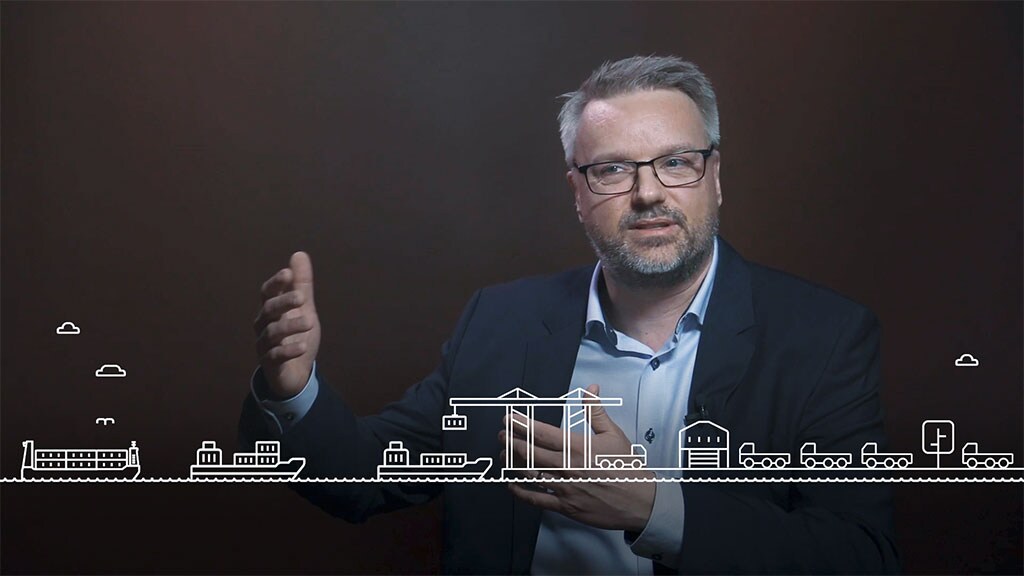VIDEO: 140,000 small dots - how data create ocean efficiency

Normally the fastest route between two ports would be a straight line. But what if that straight line is filled with bad weather, danger, and other hazards? And how would you know? Through the collection of data your logistics supplier can plan the most efficient route; steering clear of thunder strikes, troublesome waves, and even pods of whales. Data is collected through 140.000 points all around the vessel, collecting more than a whopping two terabytes of data to be analysed and used for machine learning to constantly optimise route planning.
Data can create efficiencies
By finding a more efficient route utilising data not only can delivery times be improved, but less fuel can be consumed, making the route more affordable.
And if this wasn’t enough, these efficiencies can create a ripple effect across the entire network. Usually ships have a certain slot-time, when they need to dock and have their goods unloaded to trucks or a train. If a ship is delayed, this can create queues not only at sea, but also in the ports and at warehouses. Data can help predict when a ship is ready to dock, providing visibility to mitigate irregularities and help plan the links of the supply chain better.
Get insights from an industry expert
Explore more on these topics
Related articles
See allSign up to The Logistics Pulse newsletter
You did it, welcome onboard!
We're sorry, but there was a problem sending your contact request.
Please review the form fields and ensure all required information is provided correctly. If the issue persists, please contact our support team for further assistance.
Sign up to The Logistics Pulse newsletter
Receive our insights directly in your mailbox by signing up through this form and enter a world of truly integrated logistics. Get inspired by our selection of articles that help you navigate supply chains, understand industry trends, and shape your logistics strategy. You can unsubscribe anytime.












